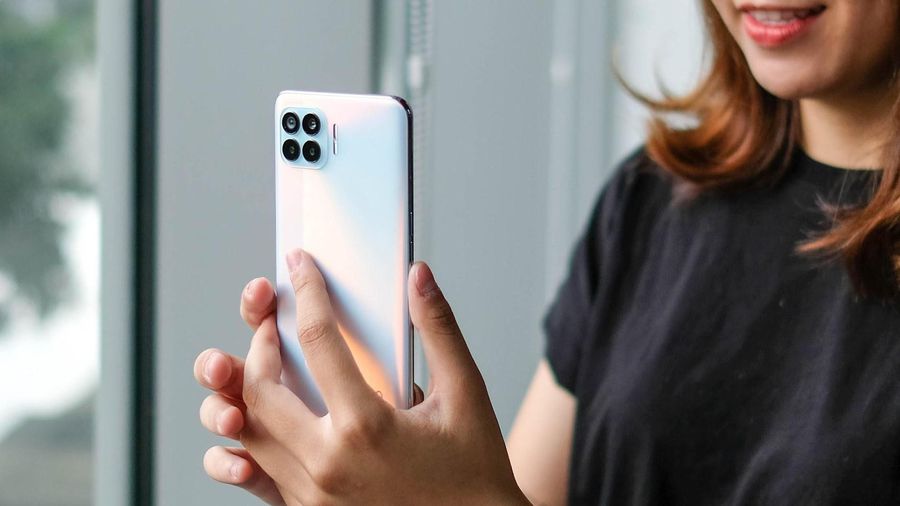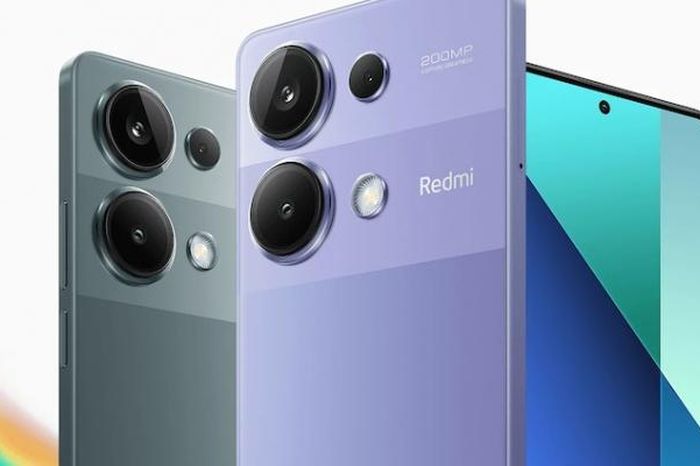Looking back: The Xiaomi Redmi Note 3 - a cheap phone into a global best-seller
With a slender aluminum case and a price of 150 USD - less than half of the Mi Note (launched in 2015), the impressive configuration of the Redmi Note 3 is the highlight that makes it a hit for consumers. use.
In fact, this phone is so popular that in September 2017, it became one of the top 10 most popular smartphones globally, according to Insight Portal - can be proud to compare with iPhone and Samsung Galaxy.

The original Redmi Note 3 uses a MediaTek Helio X10 chipset (codenamed "Hennessy"). A few months later, Xiaomi introduced a new Redmi Note 3 model with the full name is Redmi Note 3 Pro (codenamed "Kenzo"), using the Snapdragon 650 chipset, and the new model became surprisingly popular. .
After launching in India in March 2016 for $ 150, the Redmi Note 3 quickly became the best-seller phone on online stores, with a total of 2.3 million units sold up to date. September of that year - every 7 seconds a Redmi Note 3 was sold. Equally impressive, one statistic shows that 1 in 9 phones sold online in India is the Redmi Note 3.

Why is the Redmi Note 3 model using a Snapdragon chip more popular? One reason is that Xiaomi has increased the resolution of the rear camera from 13MP to 16MP. The difference of 3MP is not much, but the new camera sensor has helped push the image quality from the "average" to "quite good". Unfortunately, the quality of 1080p / 30fps videos is not improved.
But that is not the most important thing. The S650 chip of Redmi Note 3 Pro has 2 powerful Cortex-A72 cores, along with 4 smaller A53 cores (compared to the 8 A53 cores on Helio X10).

This is a fairly common layout for mid-range chips, and we still see this layout to this day because of its efficiency. When evaluated, the Snapdragon version has a double core performance and has an outstanding advantage in terms of 3D rendering capabilities. And yet, despite having the same battery (4,050mAh), the Redmi Note 3 Pro has an operating time of up to 93 hours, higher than the 72 hours of the Helio Redmi Note 3 version.
The MediaTek version also doesn't have a microSD card slot, while the Snapdragon version does - and that's an important addition, given that the device only has two internal memory options, 16GB and 32GB.
Both versions use 5.5-inch IPS screens with 1080p resolution - quite small for a machine called "Note", but still quite sharp. We never know what kind of protective layer on this LCD screen, but that certainly does not affect the popularity of the machine.

Finally, the Snapdragon version is sold globally, while the MediaTek version is only sold in a certain region.
Both devices received surprisingly good software support from Xiaomi, updated to MIUI 9. The Snapdragon version even made it to MIUI 10 before Xiaomi stopped supporting it in early 2019 (i.e., three years later. meeting day).
Of course, the MIUI version is not related to the Android version. It starts with MIUI 7 (Android 5.1) and ends with MIUI 10 (Android 6.0). Although the system core is old, the new updates still offer a lot of cool features - not bad for a great performance phone at a low price.
Xiaomi also launched a third version, codenamed "Kate", although sometimes it is called "Special Edition". The "special" part here is a modem with more LTE bands, making it possible for phones to be sold in new markets.

We don't mention the Redmi Note 2, but it has a definite role in this story - the Redmi Note 2 was announced just 3 months before the Note 3. It also uses Helio X10, but the chassis is made of plastic and The battery is smaller, which means it's not quite an attractive phone. The third generation also has a fingerprint sensor on the back, and the Note 2 simply doesn't have a chance because it doesn't have a fingerprint sensor and a microSD card slot.
Why did Xiaomi let the Note 2 launch and soon introduce a better new model? No one knows, and nobody even remembers, the previous phone, when the Redmi Note 3 completely overshadowed it and proved that the Redmi Note series is a force not to be underestimated.
Reference: GSMArena
You should read it
- 118 Xiaomi devices upgraded to MIUI 13
- The Redmi Note 10 has a very good experience with a cheap smartphone in 2021
- Redmi Note 9 Pro / Pro Max: Snapdragon 720G, 5200mAh battery, priced from 4.09 million
- Review Redmi Note 9: The new low-cost model?
- Redmi Note 9S launched in Vietnam: Snapdragon 720G, 48MP camera, 5020mAh battery
- Design, configuration and price of Xiaomi Redmi Note 8 and Note 8 Pro
- Redmi Note 9 Pro Max launched: Snapdragon 720G, 64MP camera, 5020mAh battery, 33W fast charging, priced at 1/5 iPhone 11 Pro Max
- Close-up Redmi Note 9S Aurora Blue: Nice color, good finish, Snapdragon 720G running smoothly, cluster of 4 cameras
May be interested
- Redmi Note 9 Pro Max launched: Snapdragon 720G, 64MP camera, 5020mAh battery, 33W fast charging, priced at 1/5 iPhone 11 Pro Max
 redmi note 9 pro and redmi note 9 pro max have identical designs, have a large screen, huge battery capacity but still come with a little difference in configuration, especially the camera and fast charging.
redmi note 9 pro and redmi note 9 pro max have identical designs, have a large screen, huge battery capacity but still come with a little difference in configuration, especially the camera and fast charging. - Cheap smartphone, high capacity battery
 samsung galaxy m31, xiaomi redmi note 9s or oppo a93 are remarkable smartphones, cheap prices, high capacity batteries, enough configuration.
samsung galaxy m31, xiaomi redmi note 9s or oppo a93 are remarkable smartphones, cheap prices, high capacity batteries, enough configuration. - Close-up Redmi Note 9S Aurora Blue: Nice color, good finish, Snapdragon 720G running smoothly, cluster of 4 cameras
 launched in india on march 12, the redmi note 9 pro has officially entered the vietnamese market with a new name: redmi note 9s, joining the mid-range smartphone family of under vnd 6 million.
launched in india on march 12, the redmi note 9 pro has officially entered the vietnamese market with a new name: redmi note 9s, joining the mid-range smartphone family of under vnd 6 million. - Xiaomi officially launched the Redmi 8A, 5000 mAh battery, USB Type-C, priced at 2,150,000 VND
 redmi 8a has a beautiful design, good hardware configuration, a battery with a capacity of up to 5000 mah but has an attractive price from only 2,150,000 vnd.
redmi 8a has a beautiful design, good hardware configuration, a battery with a capacity of up to 5000 mah but has an attractive price from only 2,150,000 vnd. - Xiaomi spoke up about the phone spy question
 in the announcement of the new smartphone xiaomi 4, the representative of this company explained the feature of sending data to the server in the redmi note version.
in the announcement of the new smartphone xiaomi 4, the representative of this company explained the feature of sending data to the server in the redmi note version. - Xiaomi launched the Redmi Note 13 Pro 5G version
 at the fan festival series of events, xiaomi introduced the note 13 pro 5g phone to the public. the device is equipped with a 200mp camera and a 6.67-inch 120hz amoled screen, and a 5,000mah battery.
at the fan festival series of events, xiaomi introduced the note 13 pro 5g phone to the public. the device is equipped with a 200mp camera and a 6.67-inch 120hz amoled screen, and a 5,000mah battery. - Xiaomi launched the Mi Note 10 / Note 10 Pro, the world's first 108MP camera
 system of 5 rear cameras are arranged vertically in order from top to bottom.
system of 5 rear cameras are arranged vertically in order from top to bottom. - Configuration parameters of Redmi K30, LCD screen 120Hz, Snapdragon 765, 6GB RAM
 on december 10, xiaomi will officially launch the redmi k30.
on december 10, xiaomi will officially launch the redmi k30. - Xiaomi truth has installed malicious code in Xiaomi Mi4?
 security firm bluebox has discovered a few malicious applications that have been pre-installed on xiaomi mi 4, they are a google application aimed at advertising and trojans, helping hackers to control the phone remotely. ..
security firm bluebox has discovered a few malicious applications that have been pre-installed on xiaomi mi 4, they are a google application aimed at advertising and trojans, helping hackers to control the phone remotely. .. - Redmi K30 Pro can overclock the screen from 60Hz to 80Hz
 overclocking the screen to 80hz will help the redmi k30 pro play games smoother, but this also carries many risks and can permanently void the warranty.
overclocking the screen to 80hz will help the redmi k30 pro play games smoother, but this also carries many risks and can permanently void the warranty.










 Camera review on high-end Galaxy M31
Camera review on high-end Galaxy M31 Xiaomi Mi 10 review: is the world's cheapest Snapdragon 865 smartphone 'delicious'?
Xiaomi Mi 10 review: is the world's cheapest Snapdragon 865 smartphone 'delicious'? The iPhone 12 concept with LiDAR camera, it turns out Apple designed the square rear camera cluster for a reason
The iPhone 12 concept with LiDAR camera, it turns out Apple designed the square rear camera cluster for a reason Redmi K30 Pro features Super Bluetooth technology with extremely long range, up to 400m
Redmi K30 Pro features Super Bluetooth technology with extremely long range, up to 400m Samsung may disappoint a lot of users because of the Galaxy Note 20
Samsung may disappoint a lot of users because of the Galaxy Note 20 The unlucky customers who bring iPhone to the Apple Store, there's no way to get it back
The unlucky customers who bring iPhone to the Apple Store, there's no way to get it back